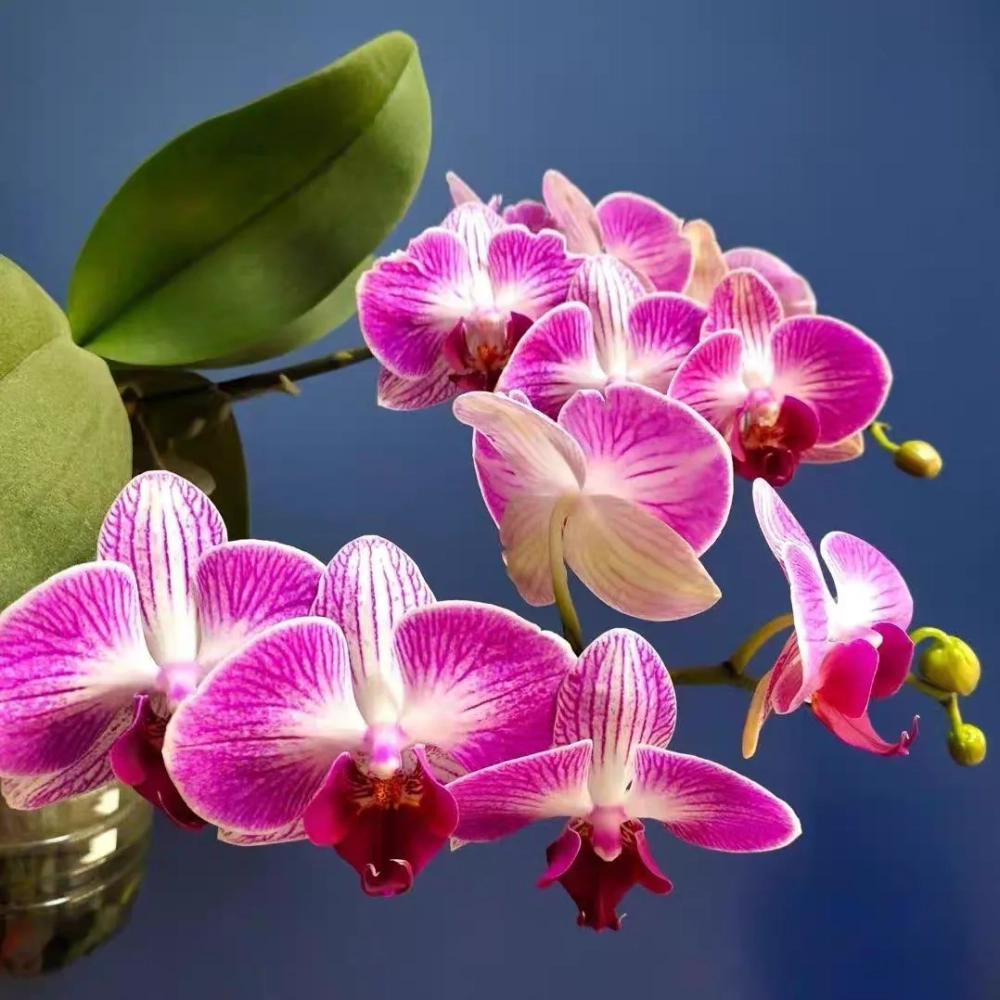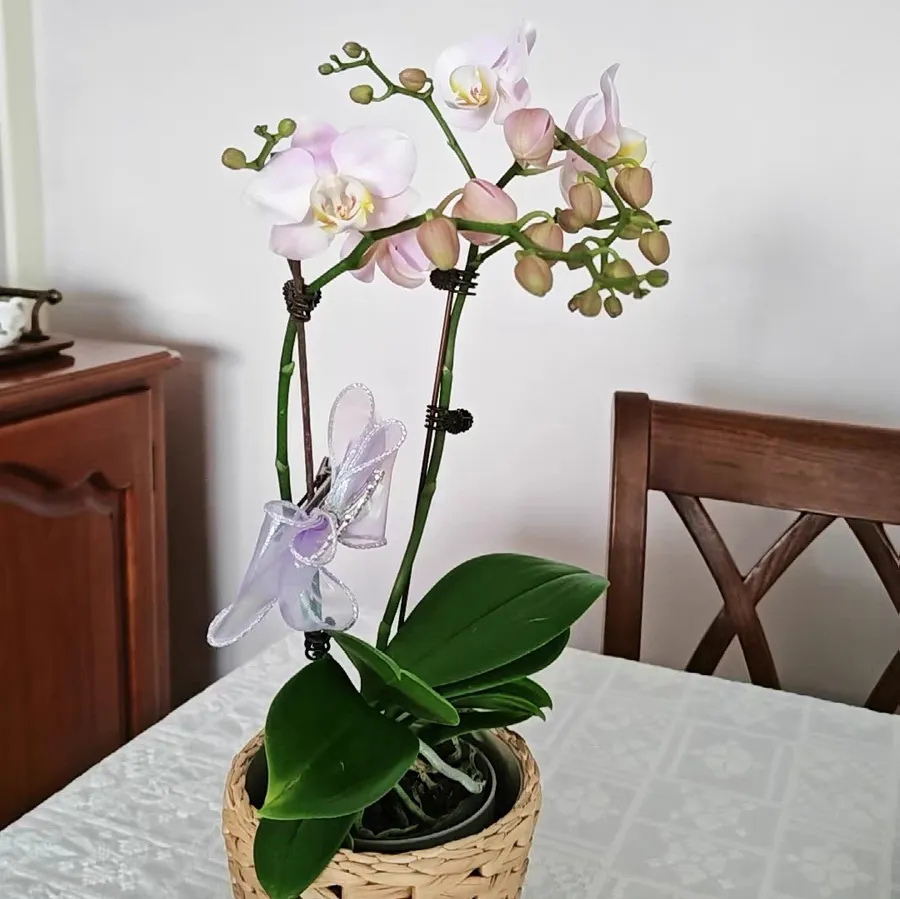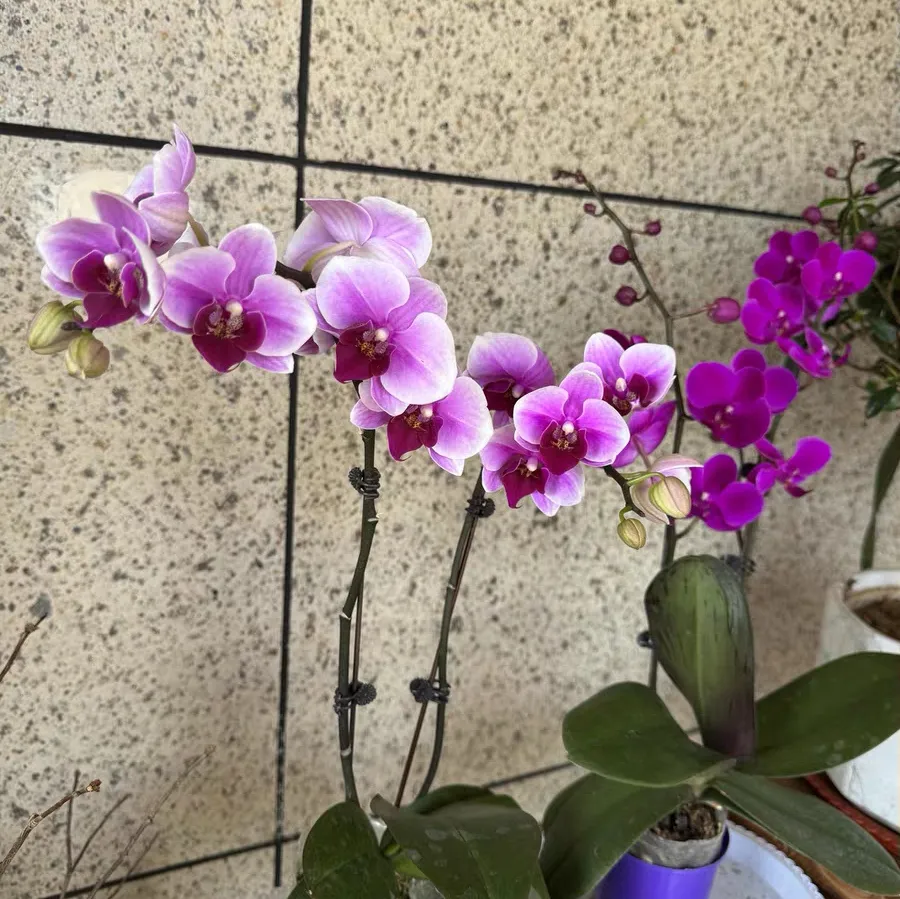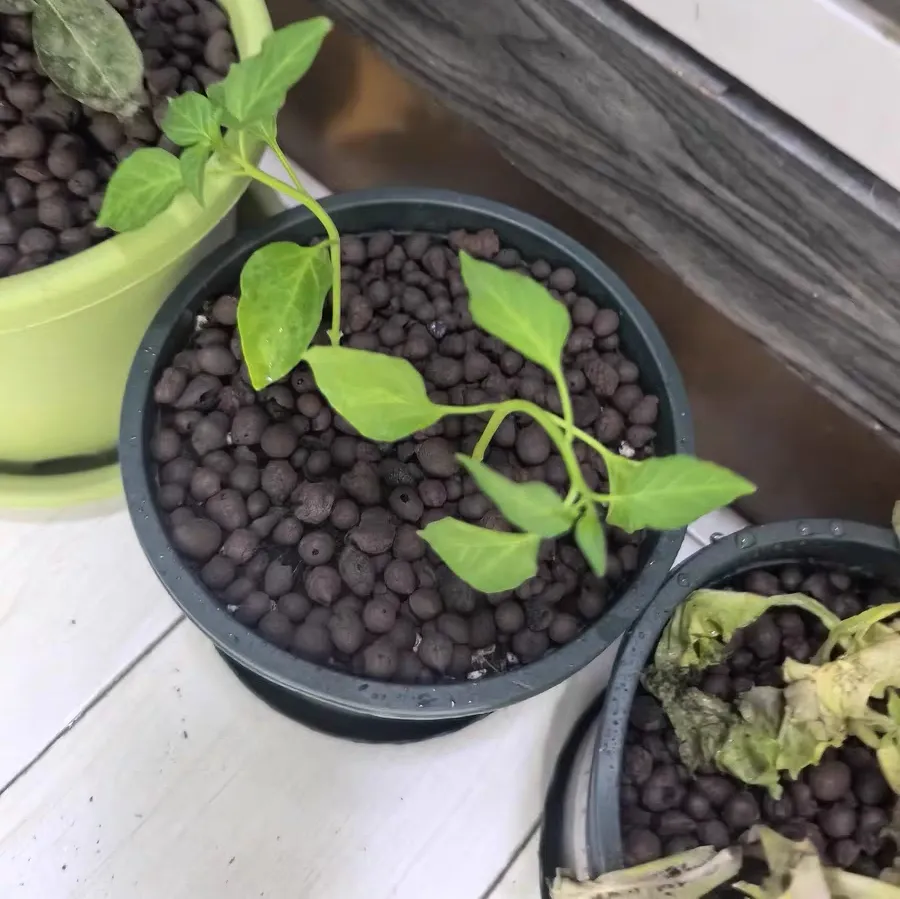Today, I'd like to recommend a Phalaenopsis orchid with a high aesthetic value to you all —— Phalaenopsis "Bird of Paradise".
Phalaenopsis "Bird of Paradise" is also known as "Magpie". The medium to large petals have a deep rose red base color that exudes a sense of high elegance, complemented by vivid white stripes. The middle petal has a pure white base color with gradient vertical stripes, as if it has a built-in soft light filter. The most amazing part is the petals on both sides, which are shaped like a bird spreading its wings. Placing it at home can immediately enhance the ambiance to the next level.
The flowering period of Phalaenopsis "Bird of Paradise" is extremely long. Under normal maintenance, it can bloom for 2 to 3 months, and if well-cultivated, it can even last up to 120 days. It blooms from late winter to spring, and it also has good reblooming ability. With proper care, it can regain its beauty the next year!
Summer Maintenance
Sunshade and Sun Protection: Although Phalaenopsis "Bird of Paradise" loves sunlight, exposure to the sun in summer can burn the petals. Set up a 50% sunshade net or place it in a location with diffused light and good ventilation, avoiding the strong sunlight from 10 a.m. to 3 p.m.
Window Ventilation: Stuffy and humid conditions are the "number one enemy" of Phalaenopsis orchids. Open the windows for ventilation for 2 hours every day, or use an electric fan on a low speed to circulate the air, reducing the risk of pests and diseases.
Temperature and Water Control: When the temperature exceeds 30°C, turn on the air conditioner to cool down. Change the watering method to "water when the soil is dry and make it thoroughly wet when watering". Water when the surface of the sphagnum moss feels dry, and pour out the accumulated water in the tray after each thorough watering to prevent root suffocation.
Humidity Control: The dry environment in an air-conditioned room can easily cause the leaves to turn yellow. Place a basin of water or a humidifier beside the flower pot to maintain an air humidity of 60% to 70%.
Apply Thin Fertilizers Frequently: Summer is the peak growing season. Spray the leaf surface with a solution of special orchid fertilizer diluted 1:1500 with water every week. Never use concentrated fertilizer to avoid burning the roots.
Warning of Pests and Diseases: Red spiders and scale insects are prevalent in summer. Check the back of the leaves every week. If you find insect eggs, wipe them off with a cotton swab dipped in alcohol. When the situation is severe, spray with "Huahuashen" (a kind of plant protection agent) according to the specified ratio.
Precautions
1. Don't spray water directly onto the petals. Residual water droplets can cause the flowers to rot. It's better to gently wipe off the dust with a wet cotton swab.
2. Trim the yellow leaves and hollow roots in a timely manner when you find them, and apply carbendazim to the wounds to prevent the spread of infection.
3. Keep it away from the air outlet! A large temperature difference can cause the flower buds to drop in an instant. It is recommended to place it more than 2 meters away from the air conditioner.
4. Don't move it frequently after it blooms! Suddenly changing the environment will cause the Phalaenopsis orchid to drop its flowers prematurely.
Are Phalaenopsis orchids and Strelitzia reginae large-flowered plants or small-flowered plants?

Share with
Tagged in :




Leave a Reply